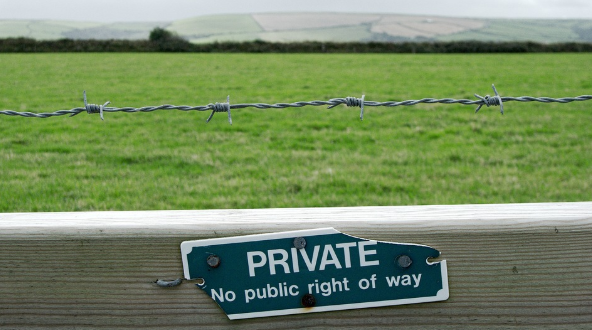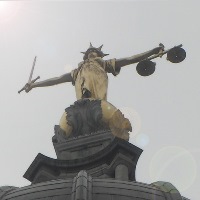
When you think of criminal offences, trespassing usually doesn’t make the top of the list. It is one of those acts that are not regarded as high-profile cases. However, the law doesn’t treat such offences lightly even if the person who has been caught trespassing has not been aware that they are committing a criminal act.
The Problem With Trespassing Charges
Some trespassing offences are clear-cut cases. However, it is more often than not when people commit trespassing offences without having the intention to. Namely, the law does not require a person to put up a “No Trespassing” sign at their private property. Remaining outside of a property that is clearly private is a logical thing to do but the problem arises when a person ends up on a property that can’t be clearly viewed as a private.
Accidental trespassing holds strong grounds in court but that still doesn’t relieve the person from being tried. If the defendant claims that they had no conscious intention to trespass but they only wandered at the property, evidence needs to be presented that there are no easily visible signs to state that unauthorised presence at the property will be considered trespassing.
However, the matters tend to get more complicated when there was a sign at the property but the person simply didn’t spot it. Such circumstances can be detrimental to a case and they can make it really difficult to fight in court without the proper legal help.
Cases where witnesses or security cameras are present are clearly easier to deal with. Still, when only two people are present, the court needs to rely solely on their testimonies. When there are no witnesses or security footage, it is of crucial importance both for the defendant and the victim of trespassing to note down the events in as much detail as possible. In the event of a lack of evidence, law enforcement will rely on the accuracy of the statements. An incomplete story can be the difference between a conviction and a dismissed case.
Trespassing Classification
The law recognizes three degrees of trespassing: first, second and third, with third being the lightest and first being the harshest offence.
Third Degree Trespassing
The lightest trespassing offences can be treated as class 3 misdemeanors. Knowingly entering and remaining at a private property after a reasonable request has been made by the property owner or a law enforcement officer falls in this category. The same applies if a person unlawfully enters a property which is clearly marked with a “No Trespassing” sign. The law also states that entering or remaining on the right-of-way tracks, storage or switching yards or rolling stalk of a railroad company is considered as third-degree trespassing.
One such action is punishable by a maximum of 30 days in prison and up to $500 in fees.
Second Degree Trespassing
If a person is caught entering a nonresidential property or a fenced commercial yard without permission, this is considered second-degree trespassing and it is treated as class 2 misdemeanor.
The fact that the property is fenced clearly indicates that the yard should not be entered by people from the outside without permission, so in such cases the defence strategy that a person wasn’t aware that they are committing a trespassing act hardly ever holds grounds.
Class 2 misdemeanor trespassing charges are punishable by up to 4 months in prison and $750 in fines.
First Degree Trespassing
First-degree trespassing mainly refers to trespassing on private residential property. Trespassing charges in this group can be treated as misdemeanors or felonies.
For trespassing to be considered a misdemeanor, one of the following acts needs to have happened:
- A person enters or remains in a fenced residential yard.
- A person enters a residential yard and looks into the residential structure, violating the owner’s right to privacy.
- A person enters or remains on real property that has a mineral claim and intends to hold, work, or take minerals from the claim or lease.
Class 1 misdemeanor is punishable by up to 6 months in prison and fines of up to $2500.
The most serious trespassing acts are those which can be classified as class 6 felonies:
- A person enters or remains on a residential structure unlawfully.
- A person enters or remains on a person’s property and burns, defaces, or manipulates a religious symbol without the owner’s permission.
- A person enters or remains on a public services facility unlawfully.
Obviously, a person who is found guilty of trespassing as a felony would face much greater consequences and become a convicted felon. The punishments go up to 18 months in jail and $150.000 in fines.
Trespassing can sometimes be an honest mistake but other times it can be an intentional act. Whatever the case is, seeking help from a criminal justice attorney is the right thing to do. They will be able to provide you with a proper defense strategy and dismiss the charges or minimize the damage.
Liz S. Coyle is the Director of Client Services for JacksonWhite Attorneys at Law. She also serves as a paralegal for the Family Law Department. She is responsible for internal and external communications for the firm.

